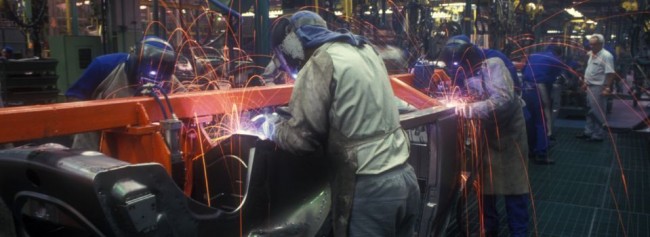Is Your Workplace Ripe for a Serious Injury?
The absence of injuries does not denote the presence of safety. In fact, a series of near misses indicates a problem in your safety management. Here are some important safety factors that identify whether your shop is at heightened risk of a serious injury or fatality.
Posted: January 10, 2013
One cause of process variability is the lack of engineered process documentation, where employees are assigned a goal then expected to figure out how best to accomplish it. Dangerous levels of variation can develop between the methods used by two different workers doing the same task. Where variation exists, so does risk.
All training is tracked. Keeping records is a vital component of certification programs like ISO, VDA, etc., but third party auditors rarely look beyond records of classroom training. On-the-job training or training delivered at the workstation must also be tracked and evaluated.
Training supports operations strategy. Training for its own sake can be just as destructive as too little training. In some cases, earnest yet out-of-touch trainers advocate for training that is neither necessary nor valuable.
Training is needs based. Match a measurable need required to perform an identified method. If the benefit of training cannot be quantified in measurable, behavioral terms, don’t do it.
HIGH ABSENTEEISM/TURNOVER
High absenteeism and/or employee turnover can be symptomatic of several risks. First, this is a good indication of poor morale, a risk factor itself that is often both a cause of increased risk and a symptom of poor safety practices. Second, a great deal of churning the shop population with new and inexperienced workers entering into a chaotic workplace substantially increases the risk of injuries. Finally, a substantial number of workers will leave jobs where they don’t feel safe.
LACK OF COMPLIANCE
Manufacturers that are only concerned about compliance after an auditor appears for a surprise inspection are far more likely to injure workers than those who recognize and understand that compliance is not enough. While it is true that compliance does not save lives, noncompliance is a strong indicator that personal safety, the law, and even workplace organization are not really valued by the company at a grassroots level.
INCENTIVE-DRIVEN ORGANIZATION
Incentives are a cornerstone of most behavior-based safety (BBS) programs, but these cherished practices can create under-reporting which, in turn, masks the real dangers inside the workplace. (For this reason I specifically consider BBS to be fairly naive and arrogant because it presumes the primary reason people get hurt is that working safely doesn’t earn them a Frisbee with the company logo and a safety slogan blazoned on it.)
Those incentive programs that actually incite participation in safety initiatives, suggest safety improvements, or find and correct hazards are appropriate and desirable, but these are not indicative of an incentive-driven organization. They really indicate an efficiency-driven organization.
LACK OF DISCIPLINE
Rampant violation of safety policy, such as a seeming inability to enforce PPE usage, reflects a shop attitude of “safety is not a real priority.” Unless workers and their supervisors show a real commitment to safety protocols, there will always be significant risk of injuries. A far more insidious indicator of risk is the tolerance for violation. When safety rules are only enforced for convenience to operations or maintenance, the probability that injuries will occur is higher.
WEAK MANAGEMENT
Ineffective managers increase the probability of injuries because ineffectual direction tends to increase process variability which, as shown earlier, increases the risk of injury. Ineffective administration misaligns the company’s stated vision with its organizational norms and relegates the mission and vision to merely words on a poster. This indicates the leadership team does not understand the purpose or value of pursuing a vision or mission. Not only can a house divided against itself not stand, it tends to hurt many of its occupants as it teeters on the brink of disaster.
PRESENCE OF MULTIPLE RISK FACTORS
Risk is cumulative and, in some cases, exponential. As more of these factors become present, the risk probability compounds such that the overall hazard level will reach a threshold where a fatality or serious injury is all but certain.
There are certainly many other indicators of risk. Some are universal and others are esoteric to an industry, organization, or even a specific location. For this reason safety professionals should look to design and build their own unique set of indicators to track and interpret risk. Only when they have a keen understanding of their core business can they ever achieve anything even close to a truly safe working environment.
















